Bike Park Tips: How To Survive Your First Ride on the Lifts
Master your first bike park visit! Learn how to ride the lifts, essential gear to pack, and top tips to conquer trails safely and confidently.
First time to a bike park and looking for some bike park tips? You’ve come to the right place! Mountain bike parks offer unlimited gravity-fed fun on two wheels. When my local Mammoth Mountain Bike Park opens for the season, I am stoked to swap out leg-powered pedaling for some lift-served fun.
But as a first-time visitor, bike parks can be a bit intimidating, to say the least.
Questions like:
- “What gear do I need?”
- “How do I load my bike onto the lift?”
- “Will I die?”
… might be running through your head. To help ease some of your anxieties, in this post, I share a few bike park 101 tips to help you make the most of your day on the lifts.
Once you’ve read it through, be sure to check out my roundup post on the Best Lift-Served Mountain Bike Parks Across the US so you can put some of these tips into action!
Choosing A Bike for the bike park
Many riders just starting out at the bike park think they need a downhill bike, but that’s actually not true.
If you’re new to bike parks, I recommend choosing a full-suspension trail or enduro bike – not a downhill (or DH) bike. DH bikes tend to be heavier, require more skills to control, have longer front and rear suspension (which isn’t always a good thing), and are geared high so they’re not easy to pedal.
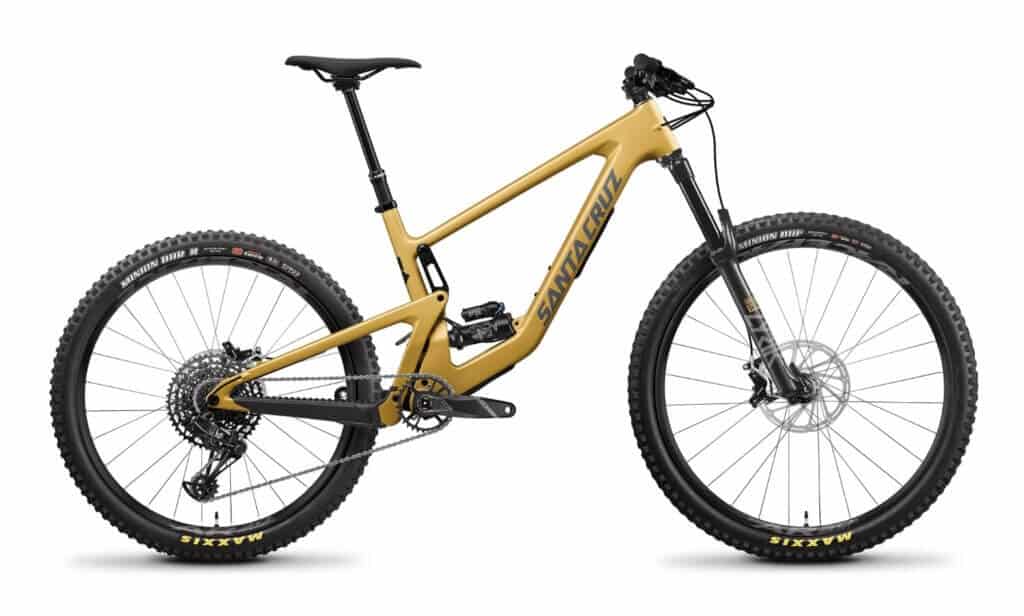
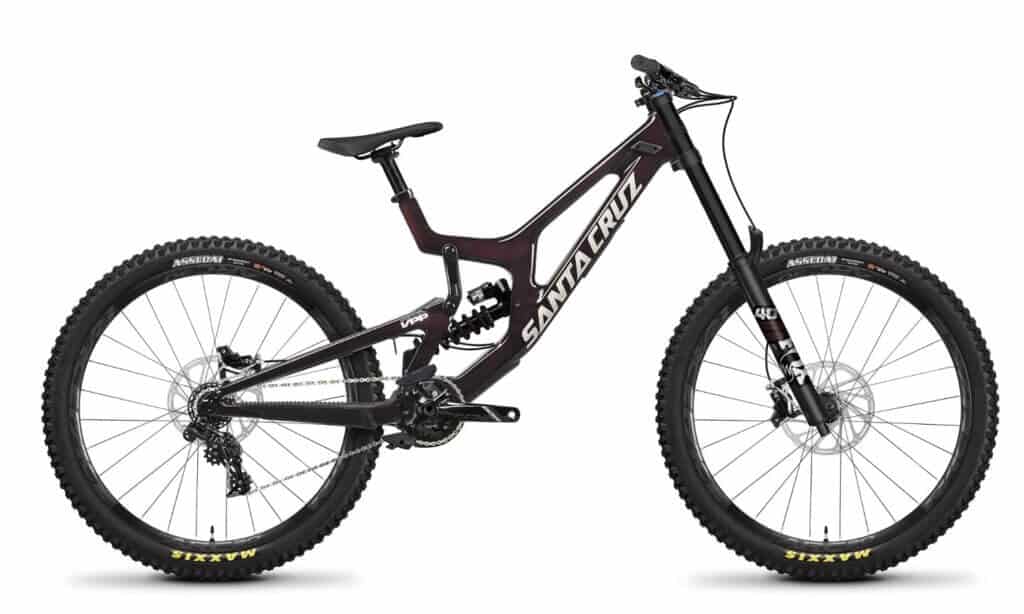
If you have your own trail or enduro bike, great! Use that and stick to the green and blue-rated trails at first.
If you don’t have your own bike, most bike parks rent them (or you can find a bike rental place in town), and let them know you want a trail or enduro bike to use at the bike park.
Typically a bike with 140-160 mm of rear travel is a great place to start.
Read next: Looking to buy your own set of two wheels? Check out my guide on How To Buy A Mountain Bike in 7 Easy Steps.
Pre-Bike Park Bike Check
It’s a really good idea to always do a quick bike safety check before every ride, but especially before heading off to the bike park. This is even true for rental bikes.
Spend a few minutes checking your:
- Tire pressure – proper tire pressure depends on what kind of tires you’re running, your weight, and how aggressive of a rider you are. Between the range of 20-30 PSI is a good start.
- Tire wear – check the knobs on your tires to make sure you have plenty of life left in them. If the center knobs are almost completely flat to the tire wall or the side knobs are ripped off it is time for a new tire.
- Headset – hold your brakes and rock your bike forward and backward. There should be no movement in your headset.
- Brakes – they should be grippy and ‘bite’ when you squeeze them. They should not be soft or squishy.
- Wheels – give them a wiggle side to side. You should not feel any movement or knocks.
- Chain – lube it if needed and check for excessive wear.
If you notice anything wrong with your bike do not ride. It’s better to be safe than sorry and spend a few hours getting it fixed and tuned up at a bike shop than spending a few hours in the ER.
Essential Gear for Bike Park Riding
If you’re just new to bike parks, not new to mountain biking, you probably already have everything you need for riding the lifts like bike shorts, chamois, jerseys, gloves, etc…
If are you new to mountain biking, here are a few helpful guides for gearing up:
- What to Wear Mountain Biking
- Best Mountain Bike Helmets
- Best Women’s Mountain Bike Shorts
- Best Women’s Mountain Bike Jerseys
- Best Women’s Mountain Bike Pants
Want a bit more protection? When I head to the bike park, I do gear up a bit more than when I’m just heading out for a pedaly ride.
Here are the ‘extra’ items that I recommend for bike parks:
A full-face helmet
A full-face helmet gives your pretty face a little more protection in case you find yourself facedown in the dirt. They have a rigid chin bar that prevents your pearly whites from smashing into rocks or your nose from getting bent to the side. I almost always wear a full-face helmet at the bike park.
I’ve tried several different full-face helmets and my current favorite is the Smith Mainline. It has a downhill mountain biking safety rating and it’s actually quite comfortable and well-ventilated for a full face.
I’ve also used the Bell Super DH extensively, which is a breakaway helmet, meaning you can convert it from a normal ‘half lid’ to a full face by snapping on the removable chin bar.
Knee pads
I never ride without knee pads, even when I’m not at the park. I’ve had too many stitches (from my ER doctor brother) and close calls not to.
My everyday knee pads are the Fox Enduro Sleeves, which I love for pedaling in.
For the bike park, though, I wear the Fox Launch Pro D30 Knee Pads which offer a bit more protection with the plastic kneecap guards. You can also buy knee pads that protect the shins as well if you want more coverage.
Elbow pads
Confession: I don’t wear elbow pads… but I should! I just haven’t found a pair that I like. And if I’m being truthful, I haven’t had a crash that’s made me feel like I need to wear elbow pads….
If you’re worried about preserving your elbows at the bike park, investing in some elbow pads is a good call.
The Fox Enduro Elbow Guards are similar to the Fox Enduro Sleeve knee pads I wear and love.
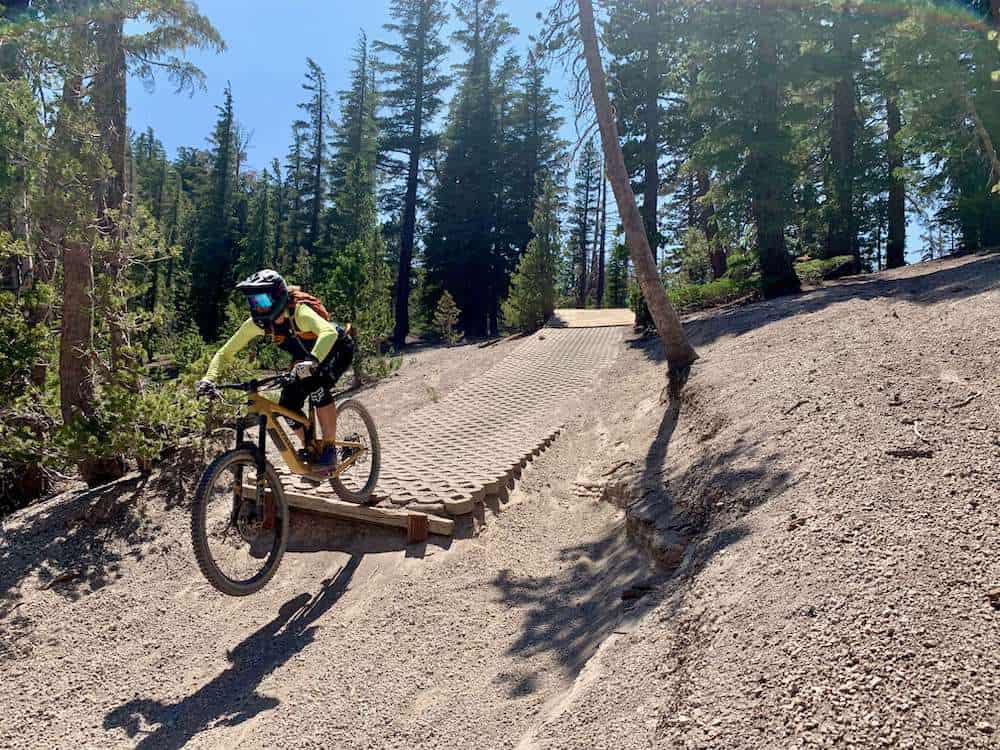
What about full-body armor? Honestly, if you’re new to bike parks my hunch is that you won’t be hurdling down the doubleblack diamond trails or sending any massive jumps (or maybe you will!).
I don’t wear full body armor and unless you’re really worried about getting hurt or you’re a teenage kid who is just going to go for it I don’t necessarily think you need to either.
Full body armor can feel restrictive and hot and truthfully can make you feel more invincible than your skills allow.
Read next: Looking for more tips and recommendations on bike park gear? Head over to my Ultimate Guide to Mountain Bike Protective Gear.
Shop My Bike Park favorites
Understanding Bike park lifts
Probably the biggest question and biggest source of anxiety for mountain bikers on their first visit to a bike park are the lifts.
How do you get your bike from the bottom of the mountain to the top? Do you have to load the bike onto the lift yourself? What if you mess up while everyone in line is watching?
Don’t worry, I’ve been there. It can be intimidating the first few times you step up to the chairlift or gondola with your bike. But after a bit of watching and some practice, you’ll be a pro.
Types of bike park lifts
There are several types of lifts commonly found in bike parks, and the kind you encounter will depend on the particular park you’re visiting:
Loading & Unloading your bike From the lift
Every bike park is different, so there isn’t a one-size-fits-all answer for how to load your bike onto the lift, but here are some general guidelines:
Step 1: Waiting in line
The lift line may seem intimidating at first, but just remember to stay calm and watch the riders in front of you for cues. When you approach the lift line, you’ll typically see a spot where you’re supposed to wait with your bike. Be prepared and have your lift pass ready for scanning.
Step 2: Loading your bike onto the lift
When it’s your turn, approach the lift. The lifties will typically signal when it’s your turn to load your bike.
If it’s a lift where you can load your own bike, walk your bike behind the chair and lift the front wheel into the rack followed by the back wheel.
If you’re not sure, don’t hesitate to ask the lift attendant for help – they’re there to assist!
Step 3: Riding the lift
After your bike is loaded onto the lift, it’s time to load yourself! All lifts are different, so watch riders ahead of you and ask for clarification if you’re unsure. Enjoy the ride to the top and scope out the trails below.
Step 4: Unloading your bike at the top
A lift attendant will usually unload your bike for you at the top. I’ve actually never unloaded by own bike at a bike park (unless it’s a bus shuttle).
Stand nearby to grab your bike when it’s off then walk it clear from the unloading area so you can make room for other riders and their bikes.
BIKE PARK TIPS FOR A SUCCESSFUL RIDE
It can be intimidating to ride a bike park lift for the first time. I was nervous too! Here are some quick tips to make it less stressful:
- Stay calm: It might be stressful the first time, but remember that everyone there had a first time, too. Take deep breaths, stay patient, and be willing to ask for help.
- Watch others: Pay attention to other riders. Watching them can give you clues about what to do and when.
- Be ready: Have your bike in one hand and your lift pass in the other (or in your pocket if there’s a scanning machine) to avoid last-minute scrambles.
- Ask for help: If you aren’t ready to load your own bike, the lifties are there to help. All you need to do is ask.
- Take your time: Rushing can lead to mistakes. Move efficiently but safely.
- Practice makes perfect: The more you ride the lift, the easier it gets!
Remember, everyone at the bike park is there to have fun. Don’t let the stress of a new experience get in the way of your enjoyment.
Ask for help if you need it, take it slow, and soon you’ll be a pro at riding the bike park lifts!
What to expect on the trails
So you’ve made it to the top of the mountain and now it’s time to ride! But how do you know which trails are appropriate for first-timers at the bike park and what should you expect?
While every bike park is going to be different, here are a few bike park tips to help you get the lay of the land:
Bike Park Tip: I recommend grabbing a bike park map (they’re usually found at the bike rental area or where you purchase your tickets) and/or downloading the TrailForks app. Bike parks are usually very well signed with trail names and difficulty, but it’s good to carry a map with you for reference.
Trail difficulty Ratings
Just like for skiing or snowboarding, mountain bike park trails are rated from easy/beginner all the way up to expert/pro.
Here are the general trail rating symbols at most bike parks:
🟢 Easy/Beginner
🟦 Intermediate
♦ Advanced
♦♦ Expert
♦️ Pro-line (professional only)
🟣 Uphill traffic only
Depending on what park you’re riding, these symbols may differ but the colors typically stay the same (i.e. greens will always be easy, and so on).
If it’s your first time at a bike park, I recommend sticking to the green and blue trails first so you can get a better idea of what to expect on the trails.
It’s also important to note that each bike park has different criteria and baselines for rating its trails. For example, some of the blue trails at Whistler Bike Park are more like black diamonds at most other smaller parks.
Many bike parks will also have a progression scale on their maps to suggest which trails to start with and which trails to progress onto next once you feel comfortable.
Last, but not least, some bike parks differentiate their freeride trails from their technical trails. Freeride trails will have more manmade features like jumps and drops while technical trails will be more rugged with natural features like rocks and roots.
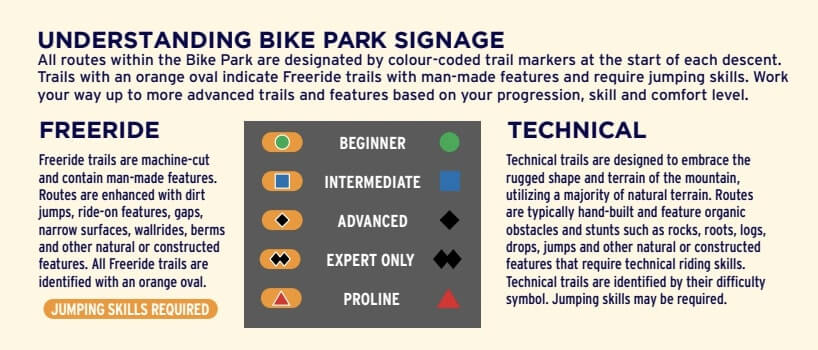
Bike Park Features
Again, all trails and all bike parks are different, so it’s hard to say what features to expect.
But in general, easy green trails will have few to no features and will be mostly smooth and wide while more advanced blue and black trails will have optional features like wall rides, small rollers and drops, and entry-level jumps and tabletops.
When you get to advanced or expert trails, features become bigger and sometimes even mandatory, meaning that there are no easier go-arounds.
Here are some common features and terms you’ll encounter at bike parks
Read next: Want to learn more mountain bike terms? Head over to my post on Mountain Bike Slang and Terminology.

Bike Park Safety
Bike parks are meant to be fun, but sometimes the fun can go a bit too far and end up… not fun.
Bike parks should have a safety system in place and be ready to help riders off the mountain and into an ambulance if needed. These safety protocols might include:
Of course, staying safe is part of your responsibility as well. Here are a few ways to ensure your day ends with a beer instead of a visit to the ER:
1. Wear Proper Safety Gear
Proper mountain bike gear is a non-negotiable at bike parks. You will most likely get your ticket or pass taken away if you don’t wear a helmet.
Depending on the difficulty of the trails you’re riding, also consider additional protection like knee and elbow pads or even full-body armor or a neck brace.
Eye protection – whether that’s sunglasses or goggles – is also a good idea to prevent dust or debris from obstructing your view.
2. Use a Suitable Bike
Your bike should be appropriate for downhill mountain biking. Don’t take your Walmart Huffy bike or gravel bike to the bike park.
Your bike should also be in good condition with properly functioning brakes (very important), inflated tires, tight bolts, etc… and the suspension should be set up properly for your weight and riding style.
3. Follow the Trail Difficulty Ratings
Bike parks typically rate their trails similarly to ski resorts, from green circles (easiest) to black diamonds or double black diamonds (most difficult).
Stick to trails that match your skill level.
If you’re new to bike parks, start with the easiest trails and progress to more difficult ones as your skills improve.
4. Respect the Rules
Always follow the bike park’s rules and regulations (see bike park etiquette below). These may include guidelines on where you can ride, how to use the lifts, and right-of-way rules.
These rules are designed to keep everyone safe, so please follow them.
5. Be Alert and Stay in Control:
Always be aware of your surroundings. Look ahead on the trail, watch for other riders, and be mindful of trail conditions.
Stay in control of your speed and avoid reckless riding.
6. Check Your Speed
Riding too fast can be dangerous – both for you and other riders – especially on unfamiliar trails. Always ride at a speed at which you can stop safely if needed.
7. Don’t Ride Beyond Your Skills
Attempting jumps, drops, or difficult trails beyond your skill level is not only stupid but also dangerous.
Progress gradually and don’t let others pressure you into riding trails or features you’re not comfortable with.
8. Take Breaks
Mountain biking, even when ‘just’ riding downhill, is physically demanding. Your arms, hands, legs, and feet will be burning. Be sure to take regular breaks to rest, eat, and rehydrate.
9. Use the Buddy System
Whenever possible, ride with a friend. If anything goes wrong, having someone there to help can be invaluable.
10. Learn Basic First Aid
Knowing basic first aid can be a lifesaver. Consider taking a first aid course and consider carrying a trauma kit when you ride.

Bike park Etiquette: do’s & don’ts
For your first time at the bike park, here are a few do’s and don’ts:
Do’s
Don’ts
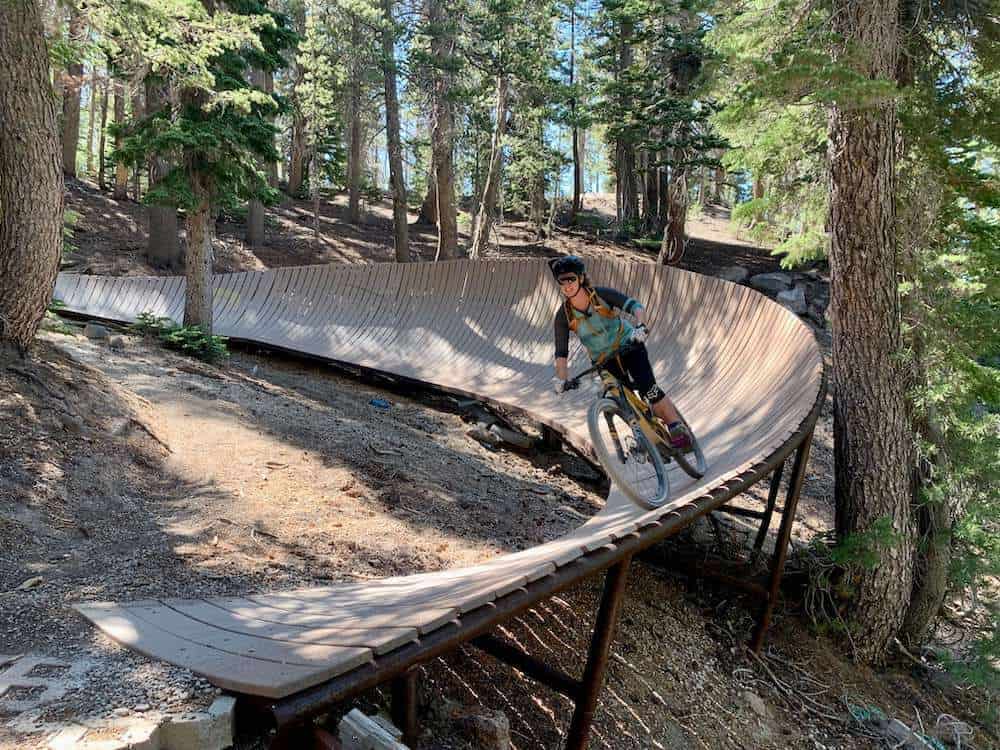
RELATED POSTS
Looking for more intro to mountain biking posts? Check out these related blog posts:
Is it your first time at a bike park? What bike park tips can you add? What questions do you still have? Leave a comment below!

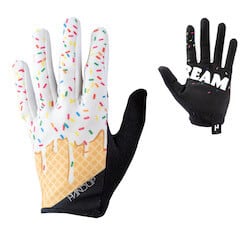
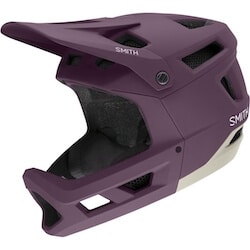
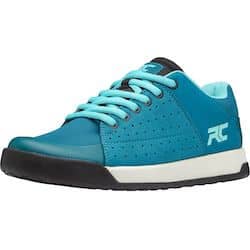
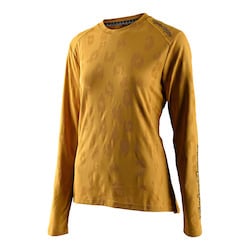

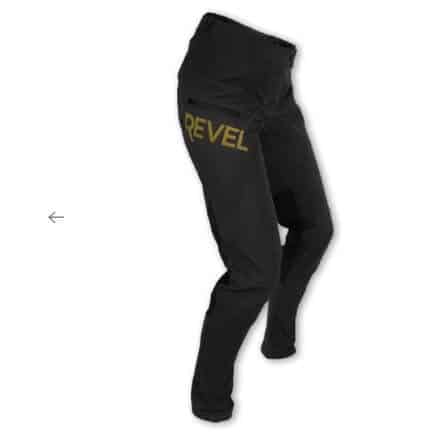

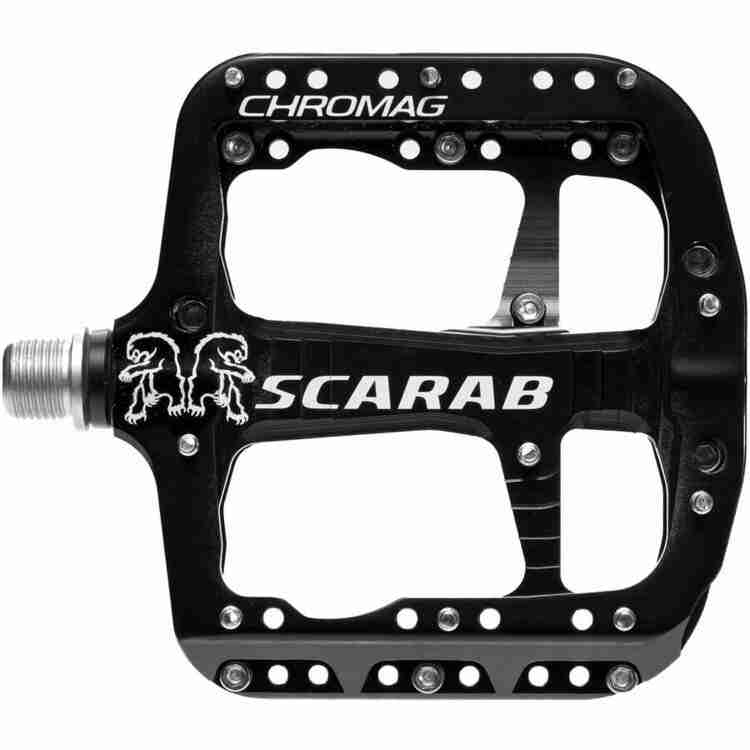
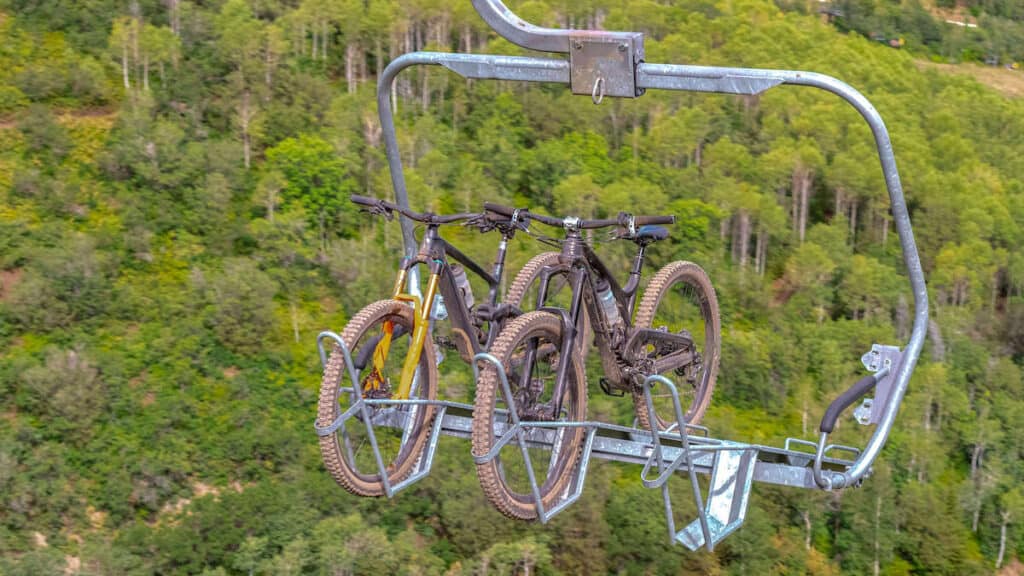
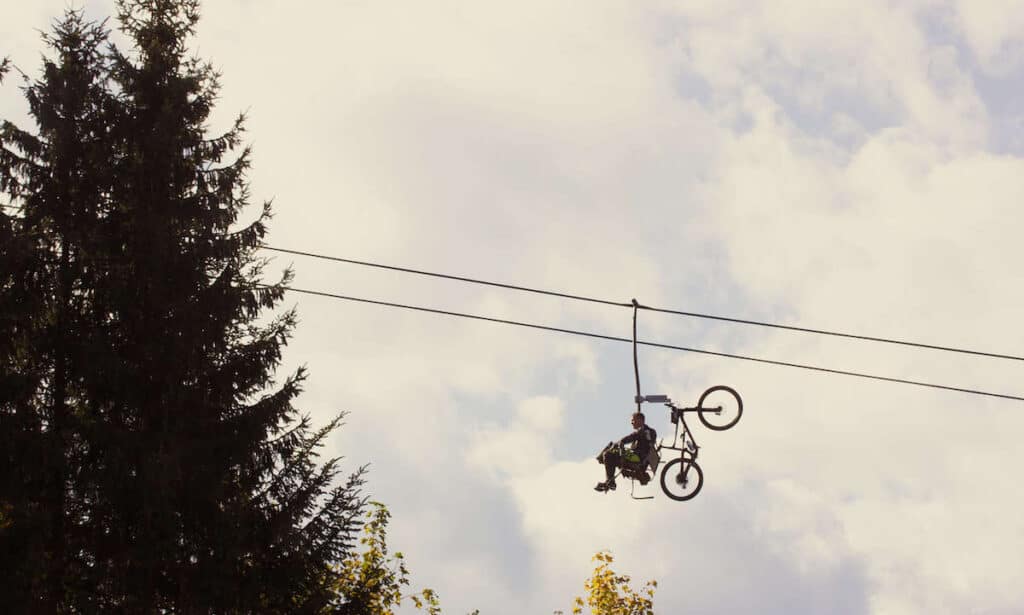
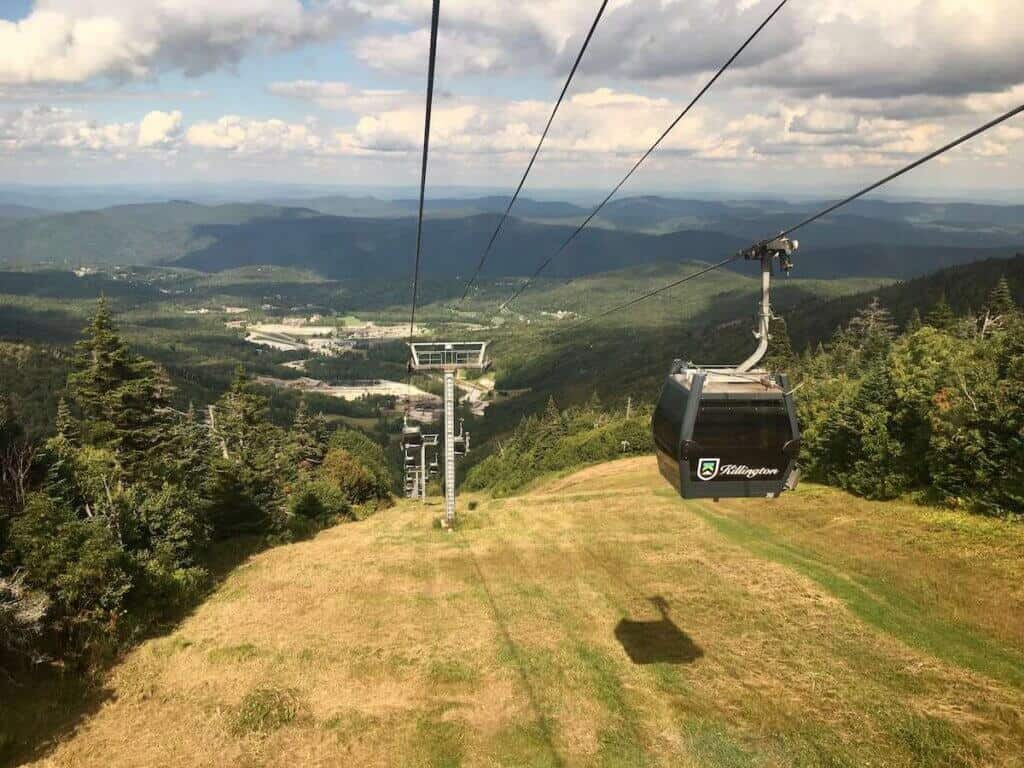
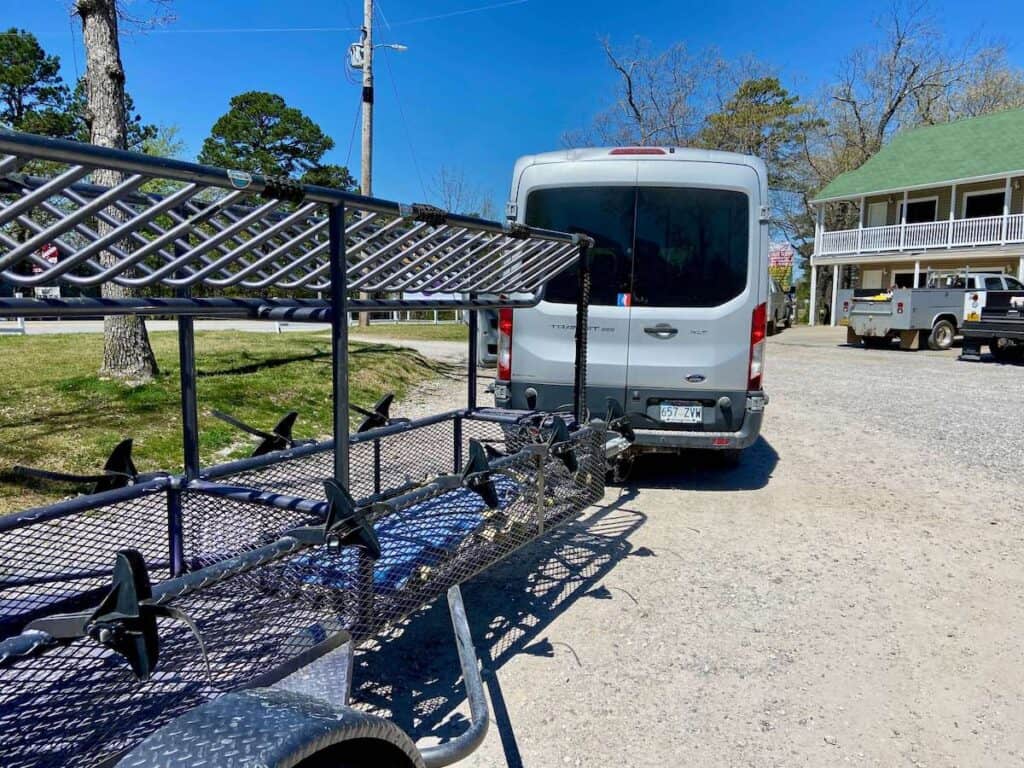
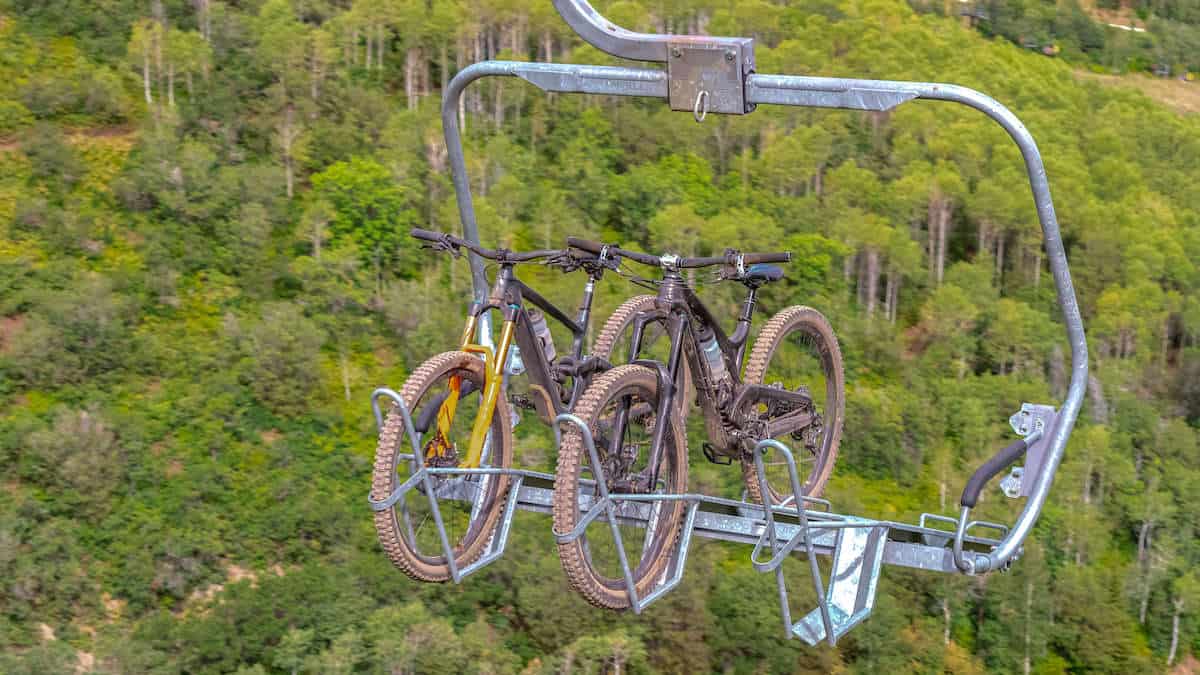
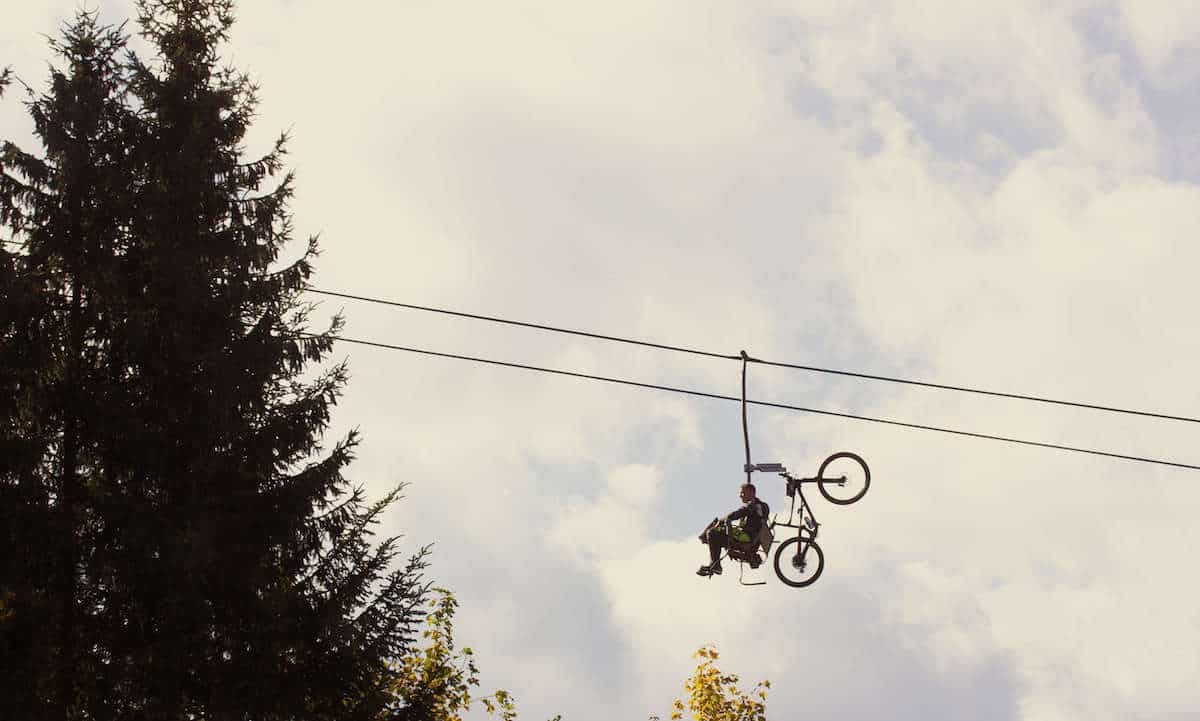
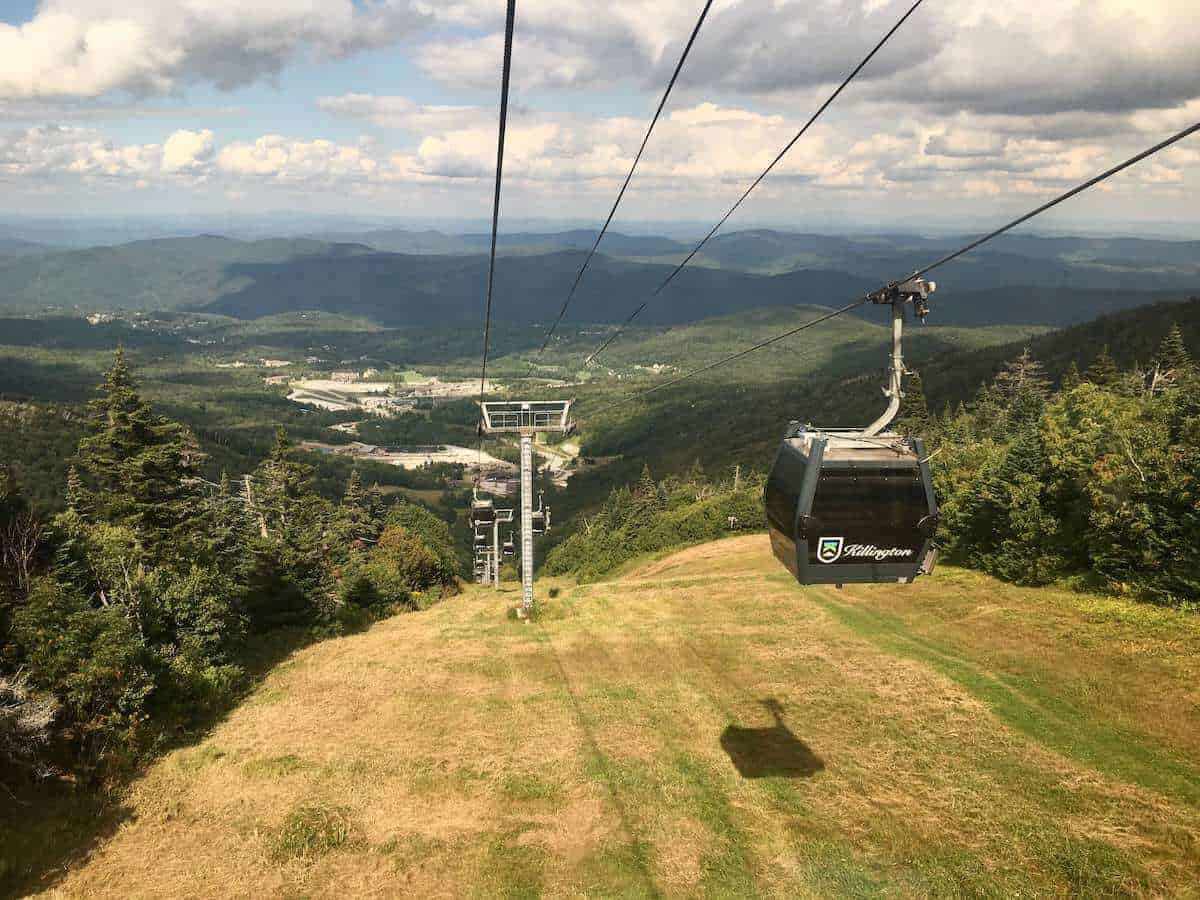

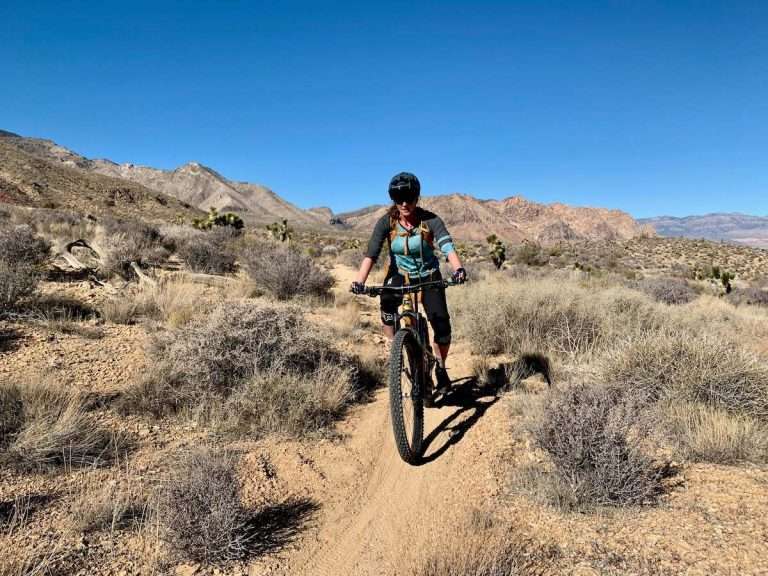
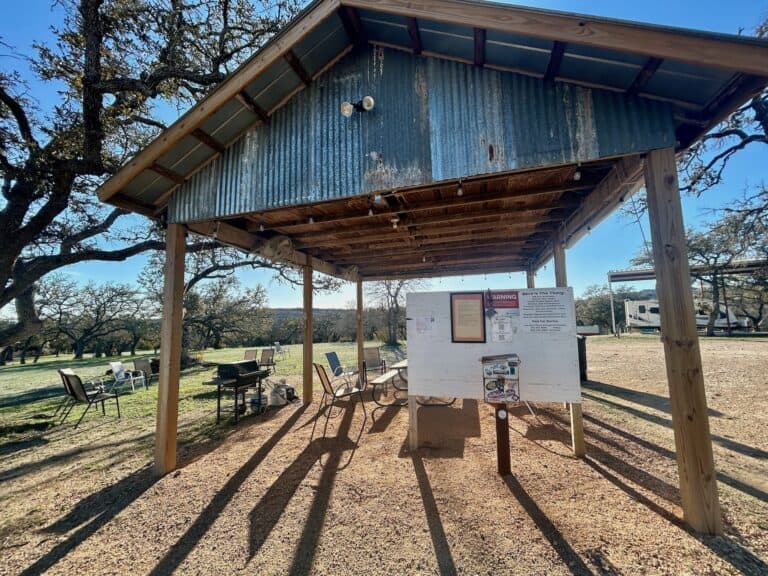
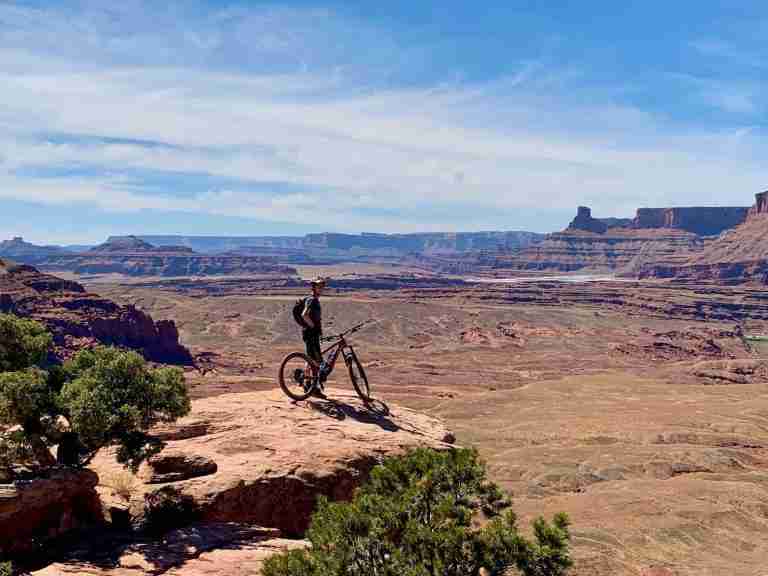
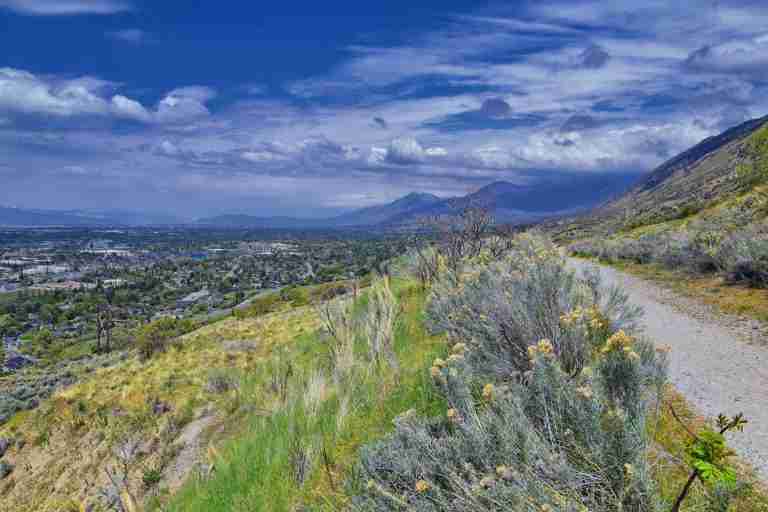
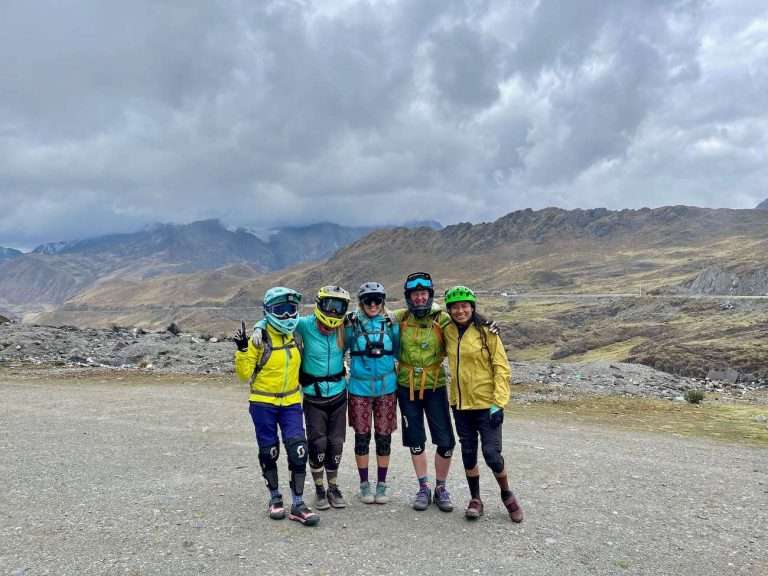
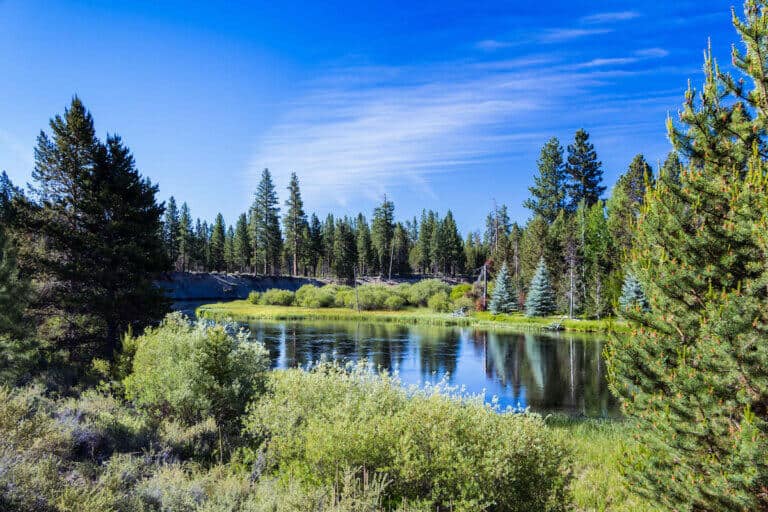
I love hearing from you and appreciate your comments! However, if you leave a rude, unconstructive, or spammy comment, it will be deleted. It’s cool to be kind. Have an awesome day!